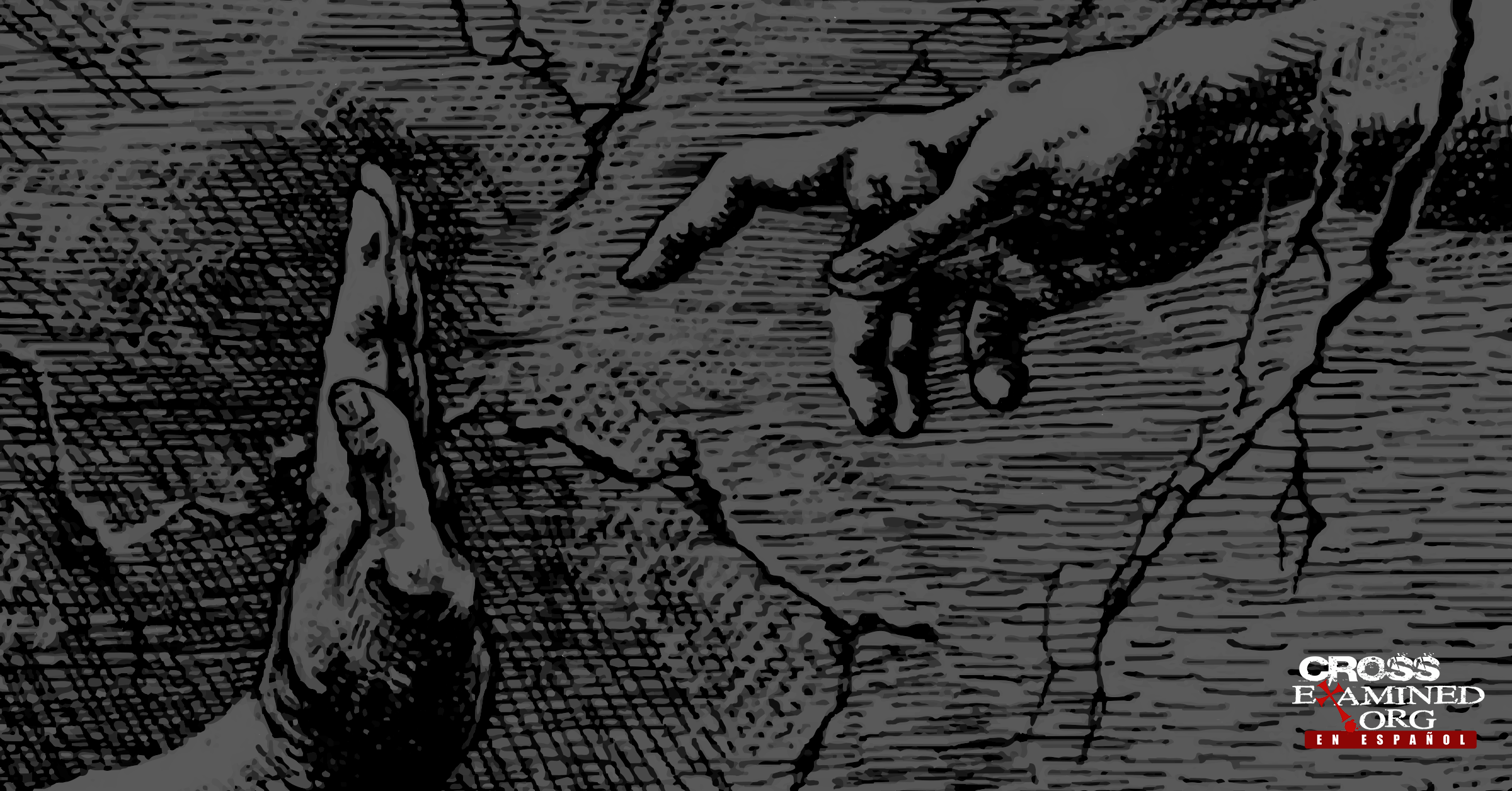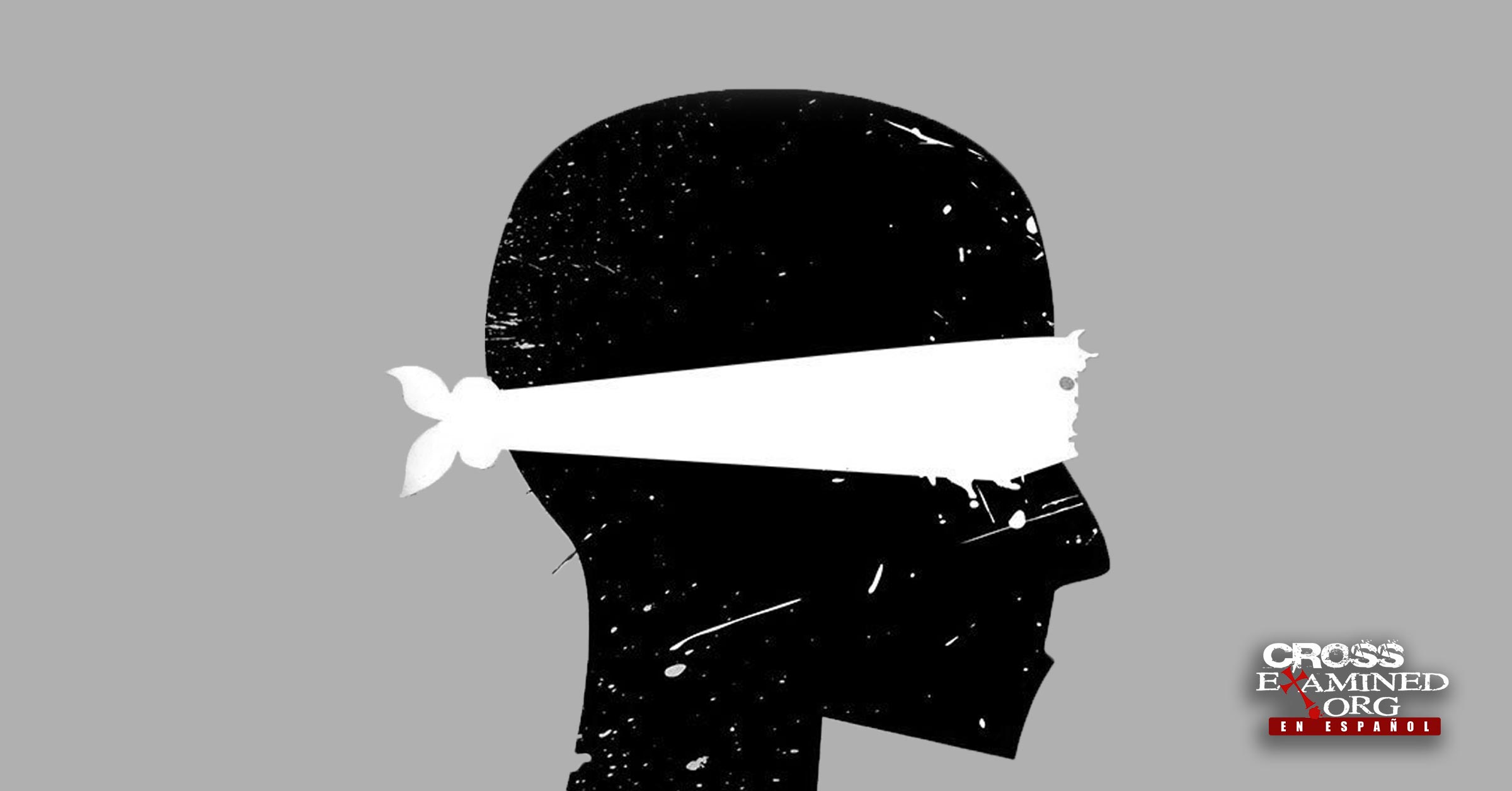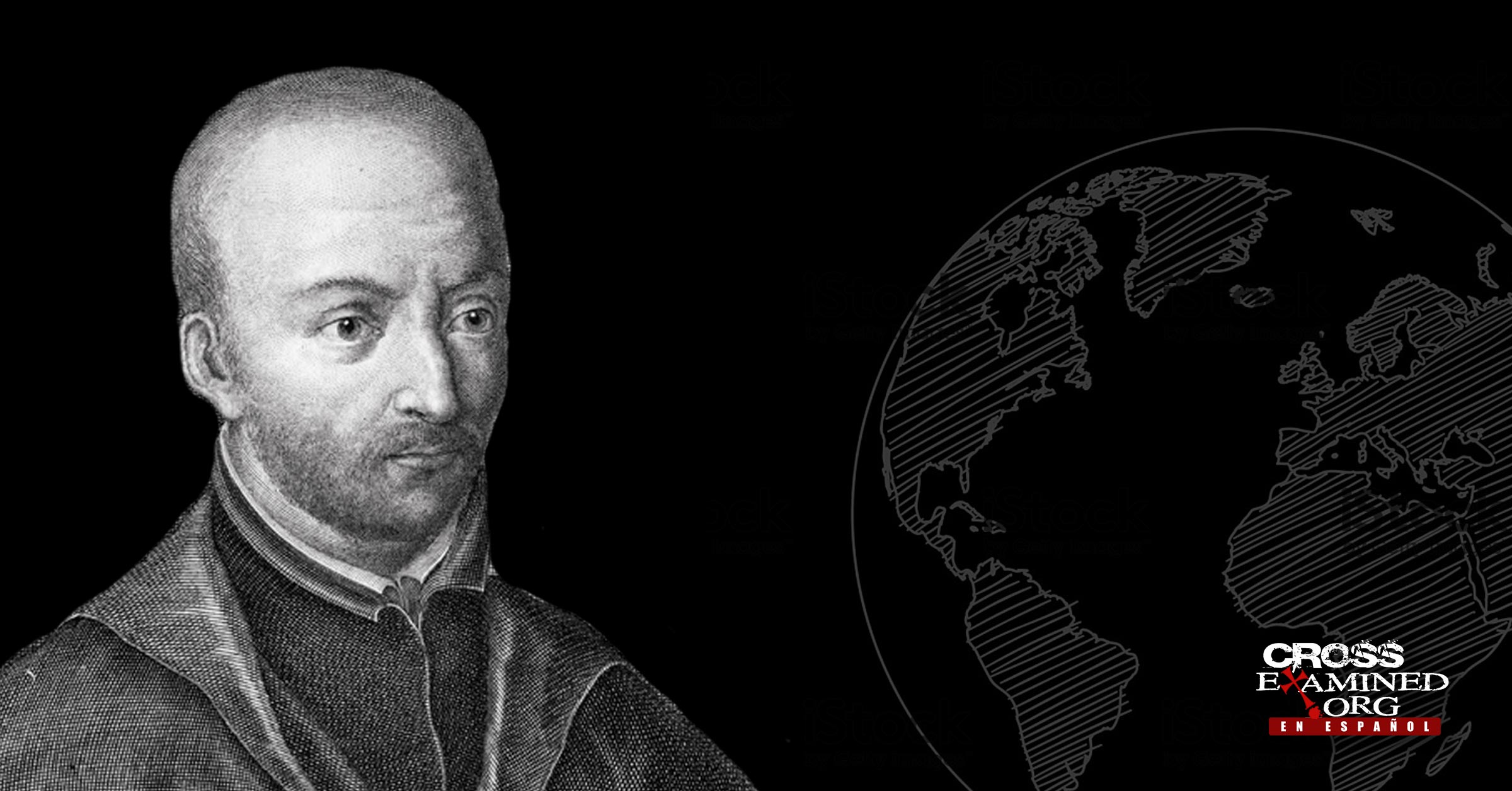In this article I will address the second of four objections that were presented to us a few months ago. You can find the first part here .
Randy claims that
Any empirical argument ( kalam , fine-tuning, design) is not evidence for God, since it would also apply as evidence for a property we have not discovered yet (naturalistic pantheism, magic, Goblin-Creates-Universes, etc.). If something is evidence for God, but is also evidence for naturalistic pantheism or magic, it cannot be evidence for either, here’s the reason: imagine a box and you say there is a rabbit in the box, and the reason for concluding that there is a rabbit in the box is that the box weighs 2 pounds, but that cannot be evidence for a rabbit because it could also be a snake or any 2-pound animal or object. By this analogy, we see that the evidence that applies to the things I mentioned above works the same as it does for God, [therefore,] they are not evidence for God. For example, the kalam , accepting it completely (which I don’t usually do because it’s wrong, but oh well) concludes that the universe has a cause, this can be a law that we have not discovered yet, magic, naturalistic pantheism or God, any of those explains it perfectly. If you argue that you use Occam’s Razor to stay with the simplest of all, the simplest would be a law that we have not discovered yet followed by naturalistic pantheism and then God.
Let us first look at a formulation of the kalam :
1. Everything that begins to exist has a cause of its existence.
1.1 Confirmed by experience.
1.2 It is a metaphysical principle that nothing can come from nothing.
1.3 If something can really come into existence without a cause, why don’t we see this happening in reality?
2. The universe began to exist.
2.1 Argument based on the impossibility of a current infinity:
2.1.1 An actual infinity cannot exist.
2.1.2 An infinite time regression of events is a current infinity.
2.1.3 Therefore, an infinite temporal regression of events cannot exist.
2.2 Argument based on the impossibility of forming an actual infinite by successive addition:
2.2.1 A collection formed by successive additions cannot actually be infinite.
2.2.2 The time series of past events is a collection formed by successive additions.
2.2.3 Therefore, the time series of past events cannot currently be infinite.
2.3 Confirmation based on the expansion of the universe.
2.4 Confirmation based on the thermodynamic properties of the universe.
3. Therefore, the universe has a cause for its beginning into existence.
4. If the universe has a cause of its existence, then there exists an uncaused personal Creator of the universe who, without creation, is unprincipled, immutable, immaterial, timeless, spaceless, and enormously powerful.
4.1 Argument that the cause of the universe is a personal Creator:
4.1.1 The universe was created by a set of necessary and sufficient conditions of mechanical functioning or by a personal free agent.
4.1.2 The universe could not have been created by a mechanical set of necessary and sufficient conditions.
4.1.3 Therefore, the universe was created by a personal free agent.
4.2 Argument that the Creator without creation is uncaused, unbeginning, immutable, immaterial, timeless, spaceless, and enormously powerful.
4.2.1 The Creator is uncaused.
4.2.1.1 There cannot be an infinite temporal regression of causes (2.1.3, 2.2.3).
4.2.2 The Creator is unprincipled.
4.2.2.1 Anything that is not caused does not begin to exist. (1)
4.2.3 The Creator is immutable.
4.2.3.1 There cannot be an infinite temporal regression of changes. (2.1.3, 2.2.3)
4.2.4 The Creator is immaterial.
4.2.4.1 Whatever is material implies a change at the atomic and molecular levels, but the Creator does not change. (4.2.3)
4.2.5 The Creator is timeless.
4.2.5.1 In the total absence of change, time does not exist, and the Creator does not change. (4.2.3)
4.2.6 The Creator is spaceless.
4.2.6.1 Whatever is immaterial and timeless cannot be spatial, and the Creator is immaterial and timeless (4.2.4, 4.2.5)
4.2.7 The Creator is enormously powerful.
4.2.7.1 He created the universe out of nothing. (3)
5. Therefore, there is a personal, uncaused Creator of the universe, who without creation is unprincipled, immutable, immaterial, timeless, spaceless, and enormously powerful.
With this argument in hand, we can now respond to each of the objections presented.
(1) Any empirical argument ( kalam , fine-tuning, design) is not evidence for God, since it would also apply as evidence for a property that we have not yet discovered […] the kalam , accepting it completely […] it is concluded that the universe has a cause, this can be a law that we have not yet discovered, magic, naturalistic pantheism, [Goblins-Create-universes] or God, any of those explains it perfectly.
As can be seen from premise (4) of kalam, the cause of the universe must have, at a minimum, the following characteristics:
a. Immateriality
b. Incausality
c. Spatiality
d. Timelessness
e. Imprincipiality
f. Eternity
g. Immutability
h. Will
i. Enormous power
Randy mentions that kalam points to an unknown property, but there is at least one problem with this proposal: a property could only satisfy characteristics a – g , but not h or i , because its very nature as an abstract object makes it causally impotent, as Craig always puts it: “The number 7 causes nothing.”
What about naturalistic pantheism? Roughly defined, it is the position that God is the sum of all natural phenomena unified, but if this is true, then by definition natural phenomena cannot meet any of the characteristics (maybe i , if we are being kind).
What about magic? The problem with this is that we have good references to the fantastic origins of magic, not to mention that contemporary magic is nothing but tricks and skills to deceive the spectator. But even if we concede that the existence of magic is possible (in the broad logical sense), the problem with this “cause” is that it has different definitions depending on the place of origin (there are both natural and non-natural magics), but in most of them, a magician is always required to use it. Probably Randy, taking advantage of how difficult it is to define magic, would be tempted to say that there could be a magic that not only meets the characteristics a–g , but also h and i , but this would be the same case that occurred in the Craig–Woolper debate, in which the atheist begins to say a string of incoherencies, such as that the cause of the universe is a Supercomputer that meets a–i , to which Craig simply points out that, by definition, that would no longer be a computer, but God himself. [1]
Let’s go with Universe-Creating Goblins. By definition, a goblin is humanoid in shape, but about the size of a small child. A description of a material being, so goblins don’t fit the a–g criteria , but they do fit the h and i criteria . Of course, Randy, you can pull the Woolper tactic and say, “Oh, but these are Super Goblins!” But we’ve already seen what the problem with that is, and it honestly has no seriousness whatsoever.
Finally, that the cause of the universe is a law that has not yet been discovered. Dr. John Lennox has a perfect answer to the claim that mathematics or natural laws are causes:
What is the nature of a law? Do laws create things? No, of course not. […] I’m a mathematician and it’s honestly the stupidest thing I’ve ever heard [that mathematics created the universe]. […] I mean, 1 + 1 = 2, right? Has that ever put two euros in your pocket? […] But mathematics doesn’t create anything. It’s just descriptions.
Newton’s laws of motion will describe the motion of billiard balls, at least in part, but they do not make the balls move – for that you need someone with a billiard stick. And here we have another big confusion: that the laws of nature are causes, but they are not! They are just descriptions of what there is. So the law of gravity is meaningless if gravity is not present. [2]
So it is clear that appealing to some unknown law does not solve the problem. Now let’s move on to the next thing:
(2) Imagine a box and you say that there is a rabbit in the box, and that the reason for concluding that there is a rabbit in the box is that the box weighs 2 pounds, but that cannot be evidence of a rabbit because it could also be a snake or any 2-pound animal or object.
But Randy, this analogy is too weak. A stronger analogy of God as the cause of the origin of the universe from premise (4) would be something like this: Imagine someone shows you a box about 12 inches long x 12 inches wide and tells you to guess what’s inside it. You take the box, weigh it, and find that it weighs 2 pounds; then you notice something moving around inside the box, the movements are random, so you rule out a toy, at which point you know it’s an animal. Then you hear the animal inside start meowing. Bingo! At this point you know that at least the animal inside is a feline, and it can’t be a snake or any other 2-pound animal. Can you tell the difference? So when you get to the cause of the universe, it, just as in the box analogy, must have certain properties given the nature of the case, such as having all the properties ai . The theist here is not making gratuitous claims about the characteristics of the cause of the universe.
(3) By this analogy, we see that the evidences that can be applied to the things I mentioned above function the same as for God, [therefore,] they are not evidence of God.
The problem is that it is a weak analogy fallacy.
(4) If you argue that you use Occam’s Razor to stay with the simplest of all, the simplest would be a law that we have not yet discovered followed by naturalistic pantheism and then God.
There is no need to appeal to Occam’s Razor to choose the best explanation for the cause of the origin of the universe because it has already been shown that all the other possible causes that Randy has postulated do not meet the necessary characteristics.
Grades:
[1] Link: https://youtu.be/LgdkFOg7utY (accessed Nov. 12, 2019).
[2] Link: https://youtu.be/rSlGMXIYKD8 (accessed November 12, 2019).
Jairo Izquierdo is a member of the Social Media team and an author for the Christian organization Cross Examined . He studies philosophy and theology, with his current focus being classical logic, epistemology, Christian doctrines, and philosophy of language. He is co-founder of Filósofo Cristiano . He is a member of the Christian Apologetics Alliance and a worship director at the Christian Baptist church Cristo es la Respuesta in Puebla, Mexico.










